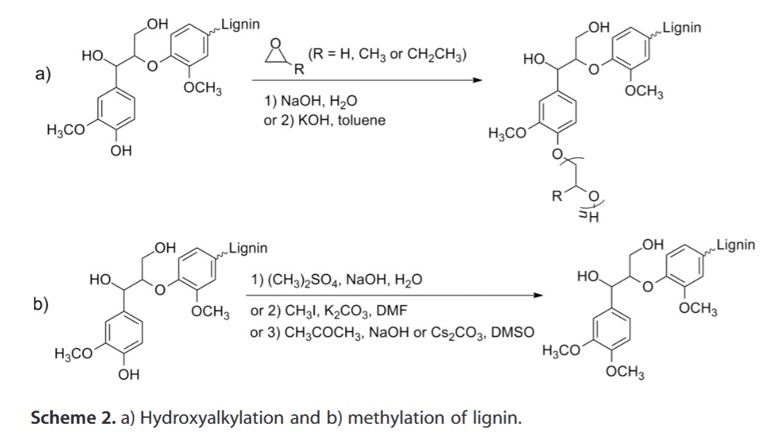Development of chemical and biochemical valorization technologies for woody biomass
Wood is the most abundant form of biomass used by industry and is the source of the three major biopolymers in nature – cellulose, hemicellulose, and lignin. While cellulose is responsible for about 40-50% of the dry weight of wood, lignin content varies from 10% to about 35% across species. For decades, lignin has been seen as a bothersome side-product that needs removal at all costs. However, in the last decade, due to its polyphenolic nature, lignin has emerged as the focus of attention as a renewable alternative to crude oil-based chemistry. The project aims to develop technologies for the extraction and fractionation of lignin and cellulose derived from low valorization level bleached chemo-thermomechanical pulp or industrial wood waste. The goal of the project is to develop practical and environmentally friendly functional materials (e.g. thermoplastics, aerogels and surfactants).

Thermoplastic-based polymers are widely used in various applications due to their flexible nature. The development of polymer technology has seen continuous demand for eco-friendly, biodegradable thermoplastic materials. Thermoplasticity is defined as the use of heating to weaken intermolecular forces that connect polymer chains, without altering the chemical structure of the polymer. Thus, thermoplastic materials can be melted and shaped multiple times into desired structures without eliciting any chemical changes. In this regard, lignin is a very promising raw material as it is readily available and sustainable. However, unmodified/raw lignin is brittle, exhibits poor mechanical properties, has a relative high glass transition temperature (for Kraft lignin 124–174 C, organosolv lignin 91–97 C), and its thermal processing is impaired by radical-induced self-condensation, which limits its application to thermosets.
Moreover, the elevated hydroxyl content of lignin could induce swelling due to water adsorption, causing expansions in the composite and, in turn, poor dimensional stability. However, the high reactivity of hydroxyl groups allows lignin functionalization, which can significantly improve Tg, thermal stability, and compatibility with polymers. Therefore, the functionalization of lignin can provide the desired physical properties for the production of green biodegradable thermoplastic materials.
Lignin esterification
- Using carboxylic acid chlorides or anhydrides
- Using bi-functional reagents, such as dicarboxylic aliphatic (sebacoyl) or aromatic (terephthaloyl) acid chlorides
- Using dimer acid (polybutadiene-based lignin polyester thermoplastic)

Lignin etherification
- Hydroxyalkylation with alkyl iodides (1-iododecane and 1-iodohexadecane)
- Etherification with fatty acid methyl esters (FAME-epoxide, methyl cis-9-octadecanoate) [Renol patent]



